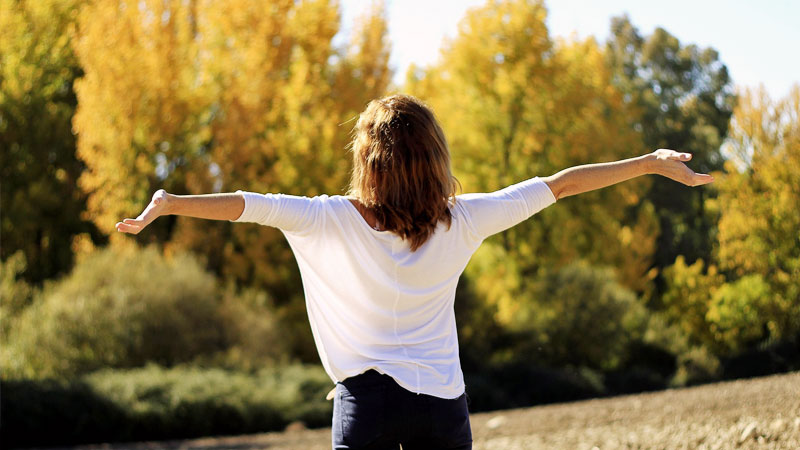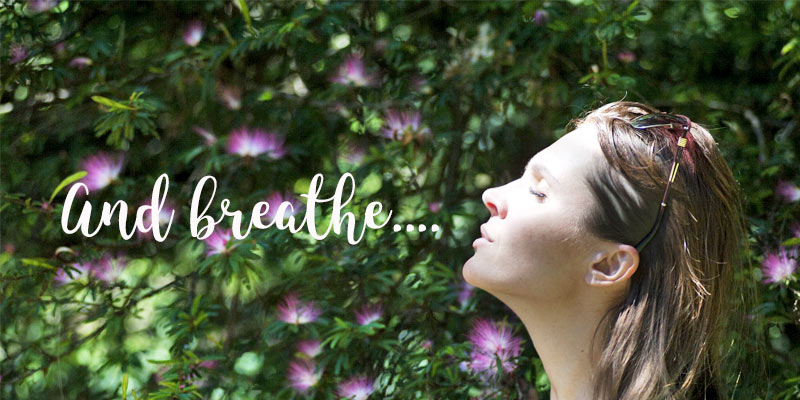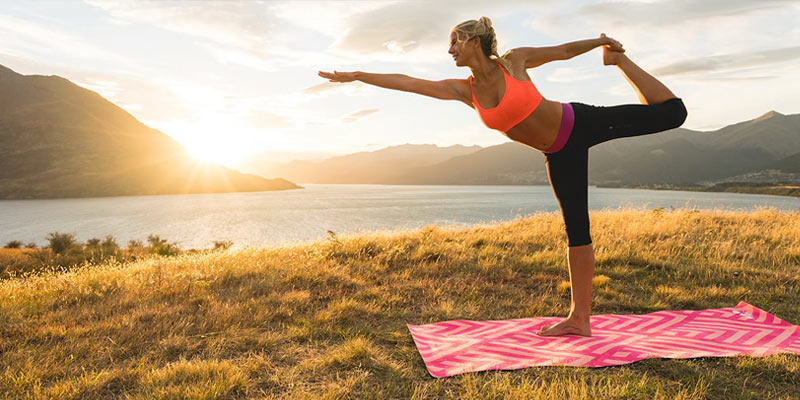
Mindfulness exercises are all about learning to be aware, or ‘paying attention on purpose’ to what is happening in the present moment. Practicing mindfulness is a way of training our minds to be observant and responsive to what is going on, in and around us, whilst being less ‘reactive’.
The theory is that as we allow ourselves to notice and to be aware of our thoughts and emotions in the moment, we also learn to let them pass. We can quietly acknowledge our feelings ….and then let them go without judging ourselves or letting our emotions control how we react.
By doing this we can shift our attention away from negative thoughts and behaviour patterns and go about our day with a renewed sense of focus, calm and clarity. It’s a bit like we’re rewiring our brain to be more responsive and less reactive so we can improve the quality of our life experiences. If we get to be really good at this, we can become resilient to our minds natural tendency to focus on those negative thoughts which cause us stress and anxiety.
It’s a useful technique to learn as it can help us to keep control of our emotions, lower stress levels and improve our mental and physical wellbeing. And who doesn’t need this in their lives…??!!
If you’re totally new to this and never come across mindfulness before, we wrote a useful little mindfulness guide earlier explaining what it is and how it can benefit you. It’s a great place to start as it gives you a bit of background and some basic techniques for you to try. There is no ‘One Way’ to do or achieve mindfulness so how you weave some mindfulness exercises into your life might depend on what you already do, what your needs are and what methods of learning suit you best.
Whether you are after some formal training or just a bit of downtime, here are a few ideas to get you started:
1. Just Do It
Once you understand the basics, it’s easy to incorporate some mindfulness exercises into your normal day. You can do it whilst you shower, when you go for a walk, eat a meal or even while you brush your teeth!! And like most things, the more you do it, the better you will get at it and the more benefit the mindfulness exercises will bring to your life.
Check out this blog post for more information about everyday mindfulness and six simple mindfulness techniques that you can use to shape your day…..every day.
2. Take a Mindfulness Course
It’s great that we can do mindfulness ‘on the go’ but for some, a more formal approach to mindfulness exercises will be beneficial. It might be helpful and indeed necessary to dedicate some time in your day to focus purely on practicing mindfulness in a more structured, formal setting. Because let’s face it… for some of us, if we leave things to get done while we’re getting things done…it just doesn’t happen!!
This might mean attending one of the many courses available which teach the different techniques of mindfulness and how to achieve them. There are courses run all over the country and prices start from $110 for a 4 week course.
There are lots of free resources aswell, including ebooks, videos and even apps that give you different daily exercises to follow. Just google “mindfulness training nz” and you’ll be surprised at how many options there are…!!
How you approach it will always be a personal choice and as you progress, you can see what works for you and your lifestyle.
3. Mat Time
There are many ways to practice mindfulness exercises. If you’ve ever done yoga, you’ll no doubt have noticed that there are lots of similarities between mindfulness exercises and a yoga practice. The grounding of your feet and toes against the mat. The focus on the body and the breath. The ‘paying attention’ and the ‘feeling’ of the sensations your body experiences as you stretch, move and breathe.
Yoga has been described as a union of the mind and body and (perhaps obviously when we put it like this…) mindfulness is actually a very important part of yoga. There are many different yoga disciplines, including hatha yoga, asana, ashtanga, vinyasa plus many more… and some yoga schools now teach mindfulness yoga; a style of yoga that is more focused on the meditation, breathing and mindfulness aspects of the practice rather than the physical work.
So, if you already do yoga, you could try incorporating some basic mindfulness exercises into your next practice. ‘Look through a different lens’ and take your next class like you’ve never done yoga before.
See if there is anything new that you notice. ‘Tune in’. Where are you…?? How does it smell..?? What can you hear..?? How does the mat feel against your hands and feet..?? Taking time to experience and pay attention to all these things are classic mindfulness techniques that help us to be aware ‘in the moment’.
Thanks to MAD Yoga for this beautiful image above which features their Tribal Love yoga mat.
4. Get Essential
Aromatherapy is a complementary practice that can enhance the results of both yoga and mindfulness exercises. Our olfactory system (or sense of smell) is complex but by presenting our brains with different scents, we can stimulate the release of particular hormones to counteract or bring about a certain feeling or emotion.
Before you begin a mindfulness exercise, decide what you need from it and choose an appropriate essential oil to use in your exercise space. For example, if you are feeling tired and want to feel refreshed with more energy, a blend of stimulating basil or rosemary oils with an uplifting oil such as rosewood could help. If you need to relax, you can’t go past lavender which is very effective at calming the nervous system. If you need a bit of extra help to relax, try out these other ways to de-stress with lavender.

5. Breathe
As we’ve seen, yoga and mindfulness have many shared principles; an important one being the breath. If mindfulness exercises or yoga don’t really appeal, but you’d still like to work on your stress levels, don’t worry. That thing we do all day every day can help too. Breathing.
Purposeful, deep, diaphragmatic breathing can really help us in times of stress. Like mindfulness, we can use it as and when we need to (you know….THOSE times….when an onlooker might say ‘Just take a deep breath Dear’…..). Or we can dedicate time in our day to practice and just breathe. Ten minutes a day is all you might need. Couple this session with some well chosen essential oil blends, and you should be well on your way to a calmer, happier space.
So, if you are feeling a bit overwhelmed, stressed perhaps or a bit like a hamster on a wheel (or a poor human on an eternal treadmill) then trying some basic mindfulness techniques could really help. There is no one size fits all and no single way to approach this so try something that will easily fit into your life.
We’re not talking nirvana or some grand epiphany here, just simple techniques that can help us to be more aware of life. The theory is that if we’re more aware, we will see more, experience more, enjoy more.





